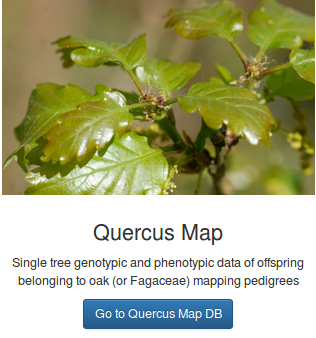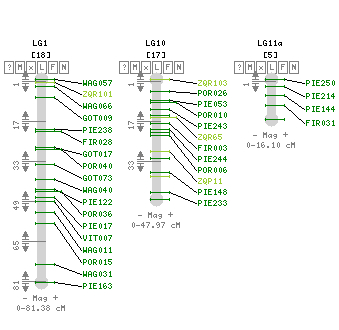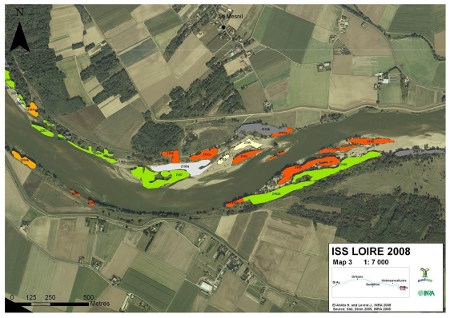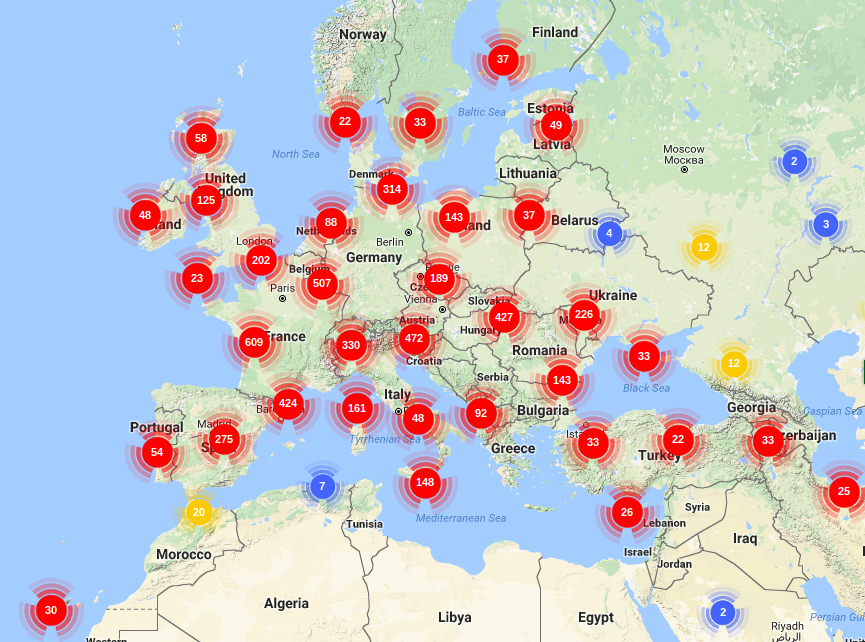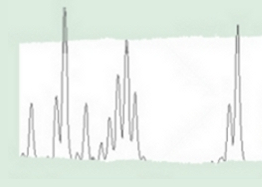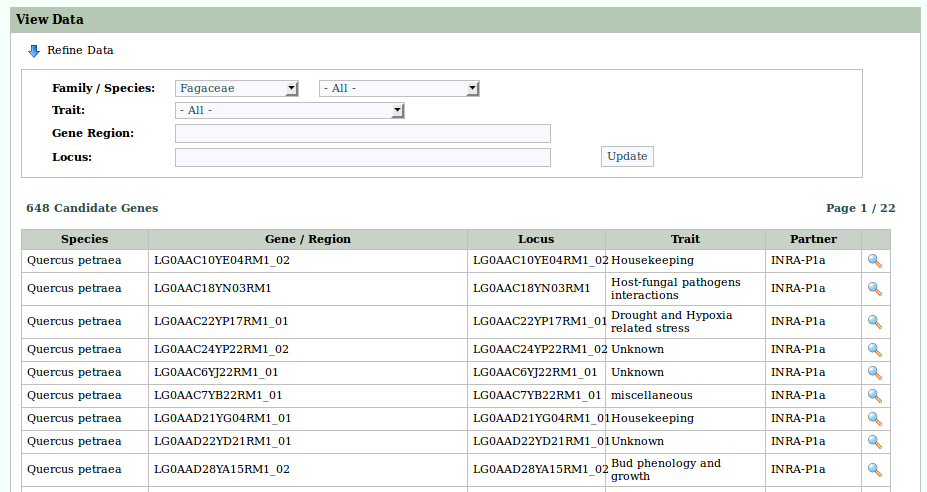BIODIVERSITY & BIOGEOGRAPHY
Oaks were and are considered by many societies as sacred trees, symbols of strength and endurance, with high cultural and historical value. They provide important environmental services like carbon sequestration, reservoir of biodiversity, soil and water protection, etc. They also provide several economic and cultural services like carpentry, furniture, cabinet making, veneer, cask industry, fuel wood, hunting and fungus gathering. (Plomion et al., 2016)
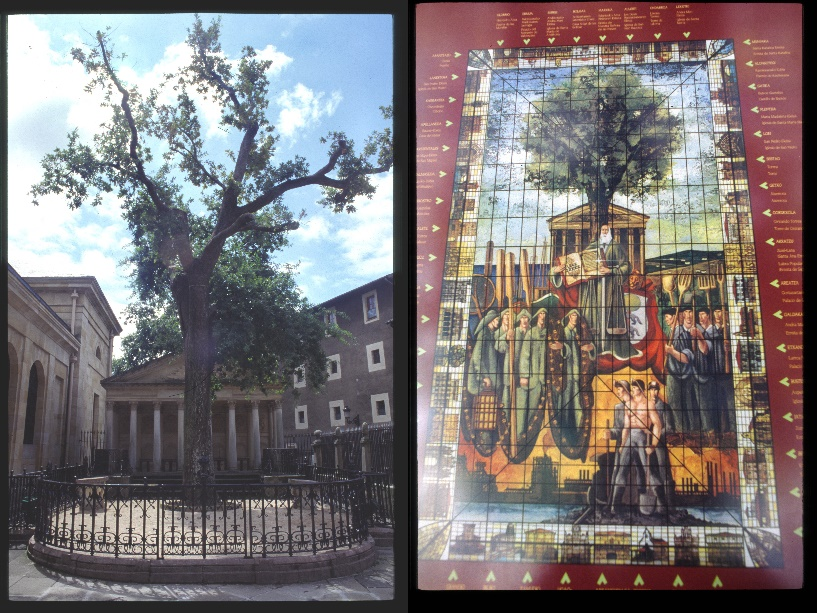
Guernica, the sacred Oak tree of the Vasque Country. (Picture by Antoine Kremer).

Oak barrels for Wine maturation (Picture by Antoine Kremer).
The genus Quercus comprises approximately 400 to 500 species (Nixon 1993 and Valencia-A et al. 2016) and has been divided into two subgenera according to the most recent classification of Denk et al. (2017): subgenus Cerris characterized by rugulae visible in mature pollen grains or weakly masked; and subgenus Quercus characterized by receptor-independent sporopollenin masking rugulae in mature pollen grains.
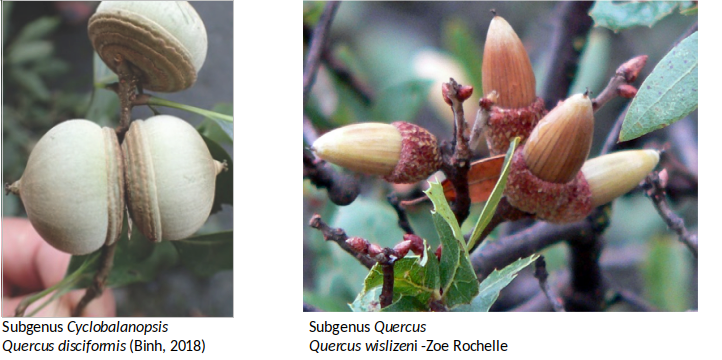
One impressive aspect of the oaks is the wide array of species diversity in habit and morphology. The genus Quercus spreads all over the northern hemisphere in Asia, North America, Europe and Africa (Axelrod, 1983), down to the Equator. Over the whole genus, there are about as many species in America (200 to 245) than Eurasia (196). However, as subgenus Cyclobalanopsis (= Cerris) is only present in south East Asia, the subgenus Quercus is less diverse in Eurasia (around 120 species) than in North America (200 to 245). Europe comprises only 22 species and Asia +100. Diversity is highest between 15° and 30° Northern latitude in central America (particularly Mexico) and South Asia (China and Yunnan Province in particular).

Yellow area: Subgenus Quercus. Pink area: Subgenus: Cyclobalanopsis (= Cerris). Picture adapted from www.primap.com by Antoine Kremer.
In Eurasia, the northern limit of distribution reaches 62-63° Northern latitude, in Scandinavia and the southern limits extends a few degrees south of the Equator (up to the Sunda platform) (Menitsky, 2005). In Europe, oaks grow from Northern Africa (Q. suber, Q. ilex, Q. afares) across the Mediterranean region up to southern Norway, Sweden and Finland, which are only reached by Q. robur and Q. petraea.
Most European species grow in the Mediterranean region. In eastern Asia, oaks of the subgenus Quercus extend from Manchuria down to Myanmar and Thailand, where they grow in mountainous areas (mainly Q. semecarpifolia, Q. lanata, Q. kingiana, Q. griffithii and Q. acutissima). Species of the subgenus Cyclobalanopsis (=Cerris) extend further south in lowland tropical forests. According to Menitsky (2005), there are 19 oak species growing in the equatorial Asia all belonging to subgenus Cyclobalanopsis (=Cerris), which are evenly distributed in Malacca, Sumatra and Kalimantan. Although, more recent investigations and new species discoveries may have raised this number to 20-23 species (Binh, 2018). The isle of Java is less diverse and comprises only 5 of this species. In central Asia, oaks spread from central China to the western border of the Himalaya mountains, from Bhutan, Nepal up to Northern Pakistan and Afghanistan (Negi and Naithani, 1995). Here again oaks grow in altitude (Q. baloot and Q. dilatata on the western part up to 2200 meters, Q. semecarpifolia up to 3900 meters in Nepal). In western Asia, oaks grow in Iran and Irak in the mountains of Zagros (Q. brantii, Q. libani) and Elbruz (Q. castaneifolia, Q. macranthera). In Vietnam, according to Binh (2018) a total of 45 Quercus species are recorded, amongst which 38 species belong to subgenus Cyclobalanopsis (=Cerris) and 7 species belong to subgenus Quercus (remarkably Q. lineata and Q. trungkhanhensis). Widespread European species extend at their eastern limit in Caucasus (Q. petraea, Q. robur and Q. pubescens) where they meet eastern Asian species (Q. macranthera, Q. hartwissiana, Q. infectoria). Lebanon and Palestine are at the extreme Asian edge of the Quercus distribution (Q. aegilops, Q. infectoria).
In America, the northern limit of distribution reaches 50° Northern latitude, and the southern limit is in Colombia. There are only a few oak species extending up to Canada (Q. garryana, Q. rubra, Q. alba and Q. macrocrapa). USA has 35 red oak species (section Lobatae), and 51 white oaks (section Quercus) (Manos, 2016; Denk et al. 2017 and Nixon, 1993). Most of the oak species are present in the Eastern part of the country, up to the Mississippi river. In the western part of the USA, Miller and Lamb (1985) identified three groups: the west Texas oaks (9 species), the southwestern oaks (16 species) and the pacific coast oaks (11 species) (Pavlik et al., 1991). In Mexico oaks occupy all the major mountain ranges, including the Chihuahan desert range. There are 56 oak species in Central America and only on in South America (Q. Humboldtii).
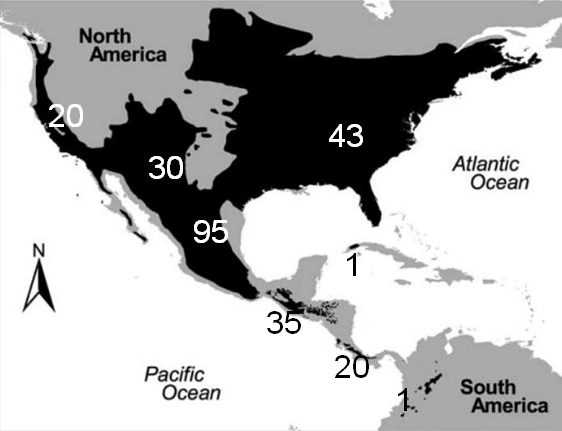
Location and number of Oaks species in America. (Manos, 2016).
Oak species grow from the sea level up to 4000 meters in the Himalaya Mountains (Wang, 1961; Menitsky, 2005). Throughout its natural distribution, the genus has differentiated in numerous species adapted to extremely variable habitats from swamps to deserts, and from lowland to high altitudes. Oaks also exhibit a very wide diversity of forms from shrubs to massive trees. The range of distribution of the species can vary from very local to wide inter-continental scales. Typical examples of extremely wide distribution are Q. rubra and Q. alba in North America, Q. acutissima and Q. mongolica in Asia, Q. robur and Q. petraea in Europe.
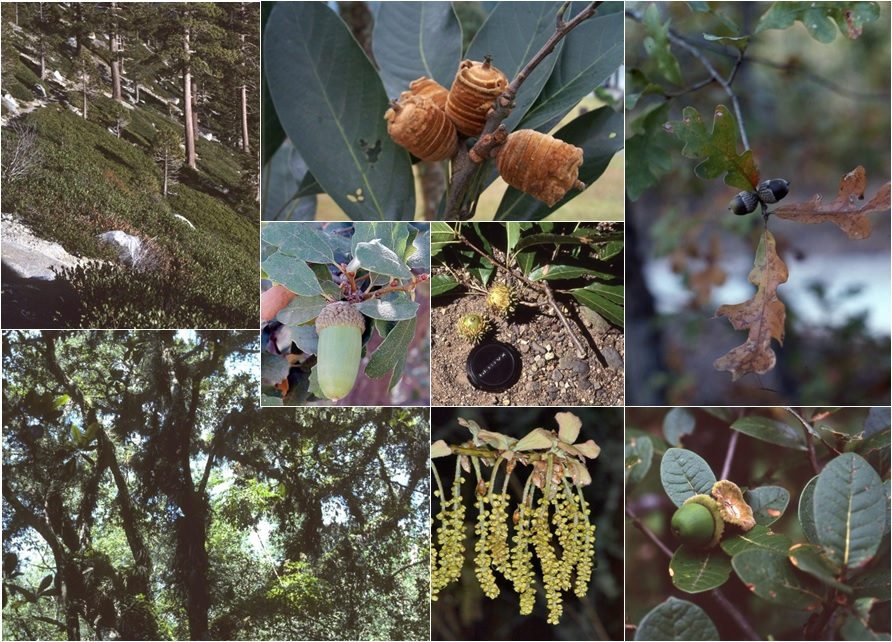
Oaks Diversity. (Manos, 2016).
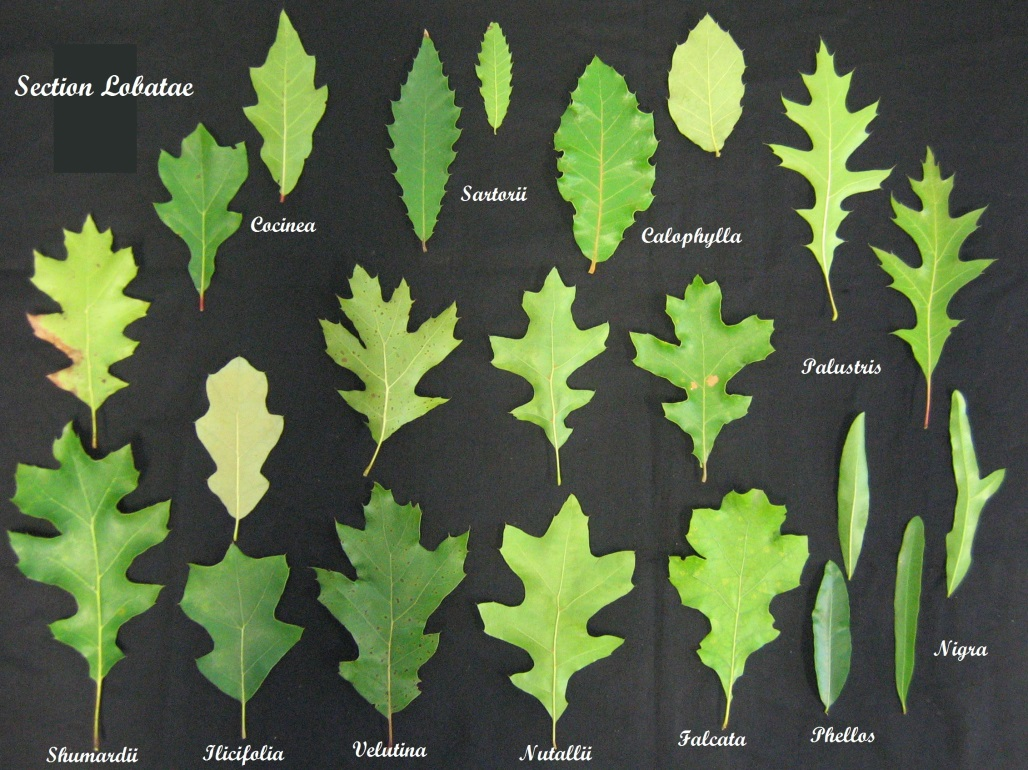
Leaf morphological variation of oak trees belonging to section Lobatae (Picture by Antoine Kremer).
Worldwide distribution of oaks
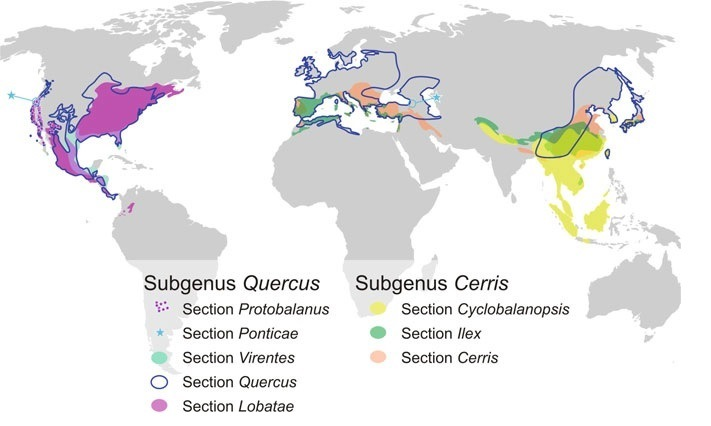
Subgenus and sections based in the new taxonomic reviews of Denk et al. (2017). Image by Manos (2016).
Oak species in Europe
Oak species in Asia

